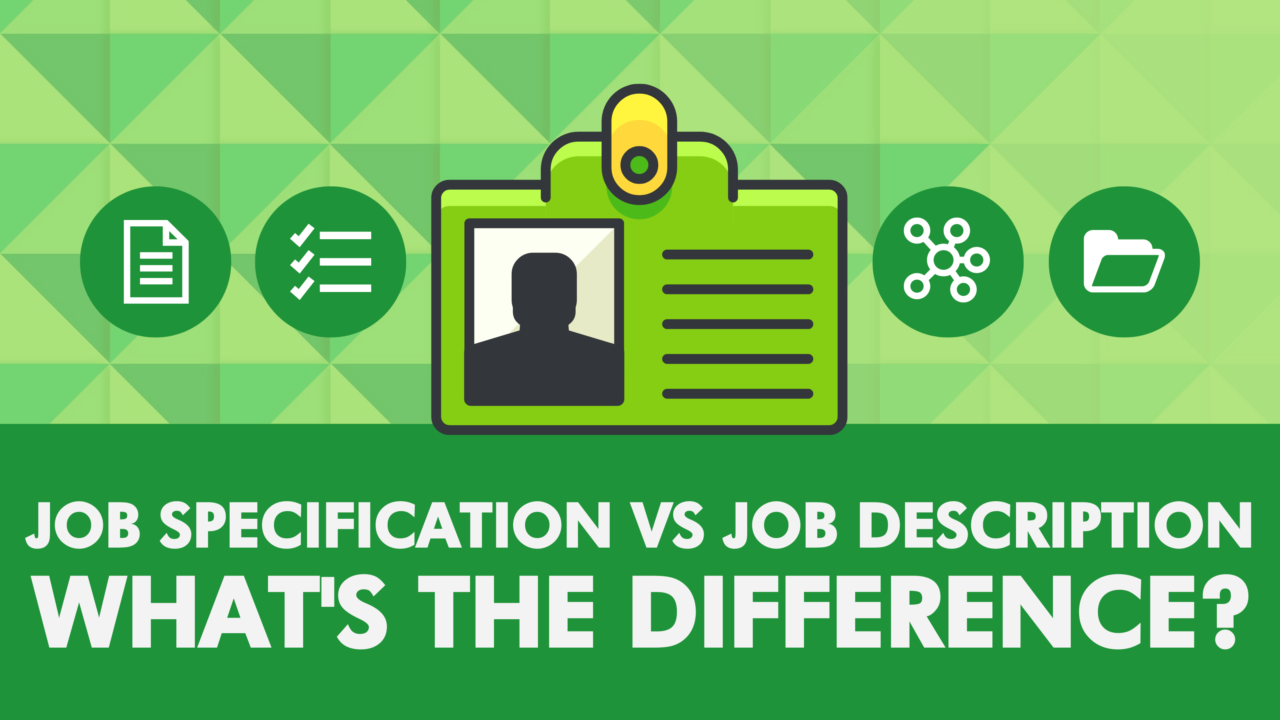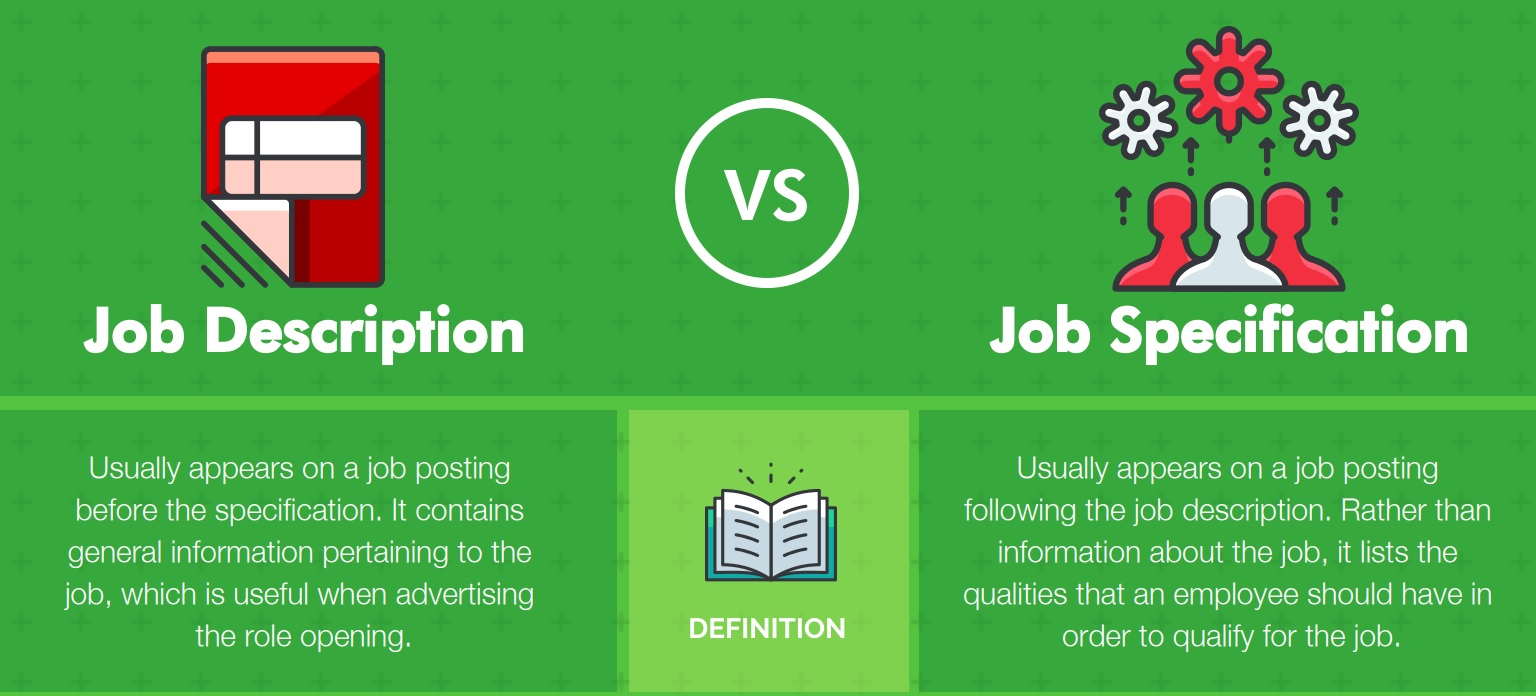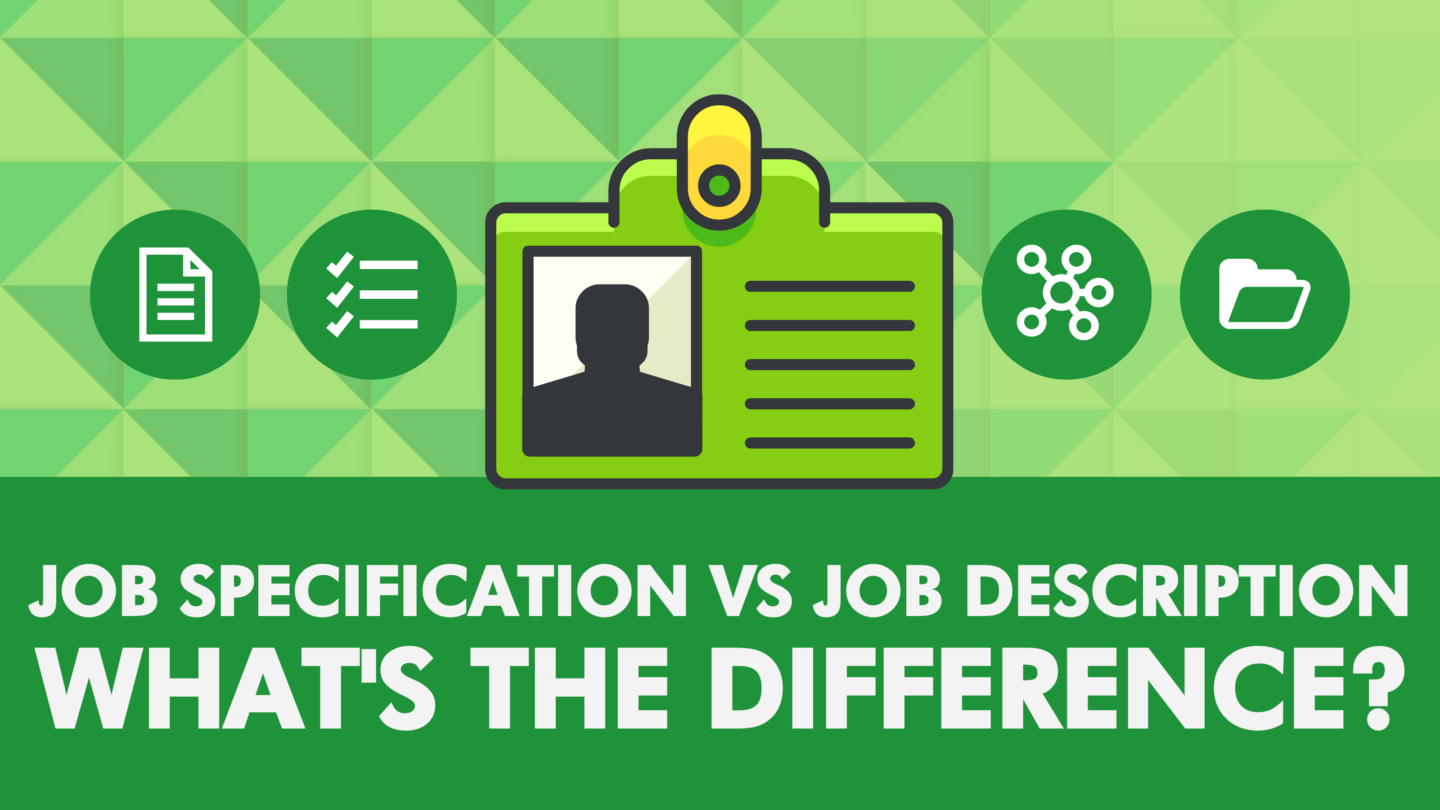
Job Specification vs Job Description – What’s the difference?
If you have ever applied for a job, you’re probably familiar with what a job posting looks like. They usually have a brief description of the company for which you would be applying, including its history and some current positive attributes. After that, you will see the two most important aspects of the post (other than the contact information!) – the job description and job specification.
In a hurry? Take our Infographic to go!

Job Specification vs. Job Description
Send download link to:
While these sections appear similar, they are in fact different, although both are integral to both the potential employee and the employer. Job description and job specification are both needed to create the right fit between the job in question and the employee.
So what are they?
Job Description
The job description will usually appear on the posting before the job specification. It includes general information pertaining to the job, which is useful when advertising the role opening. Some information it may list includes:
- The job title, location, duties, and summary.
- The working conditions, including what machines will be used, and any potential hazards.
- Who the employee, if hired, will report to.
The job description helps target the right people for the job because it clarifies the responsibilities they would have should they be hired. For any potential employees job-hunting, the description here is enough to let them know if they would be a good fit for the job and therefore, decide if they want to pursue the position or not.
While a job description is obviously useful for prospective employees, it also helps the company. The ample information as to what the job entails gives recruiters a very good idea of what sort of person they should be looking for when conducting interviews. It can also later be used by management to figure out what sort of training will need to be given to the employee, as well as evaluating their performance further down the road.
So how does job description compare to a job specification?
Job Specification
If a potential employee reads the job description and finds themselves interested, the next section they read will be the job specification.
As opposed to the job description, which lists the information about the job, the job specification lists qualities that the employee should – or sometimes, must – have in order to qualify for the job. Some examples may include:
- Educational qualifications
- Training/experience in the specific job
- Relatable skills
- Previous responsibilities
- Ability to work within a certain environment (such as loud noises, bright lights, etc.)
The job specification is very important, as it helps the potential employee quickly analyze whether they are qualified for the job or not. This is helpful not only to the person applying, but to whomever is doing the hiring as well, since it clearly outlines eligibility requirements. While sometimes the job specification includes optional items (i.e. being bilingual is preferred but not critical), obviously the more of the requirements an employee would have, the better fit for the job they would be.
Job Specification vs Job Description
Now that we’ve defined both a job description and a job specification, it’s easy to see that, while they appear relatively similar at first, they both are outlining different criteria. Both give job-hunters information they need, while also helping recruiters narrow down their search parameters. Let’s look at a comparison of the two:
What do they contain?
Job description: usually contains general information about the job itself, including the title, location, summary, duties, working conditions, who the person would report to, etc.
Job specification: lists out the educational qualifications, training, experience, skills, and competencies, etc. someone would need to do the job.
What do they measure?
Job description: this simply measures the tasks and responsibilities that would come with this job.
Job specification: this outlines what the employee must be capable of doing in order to succeed in this specific job.
How are they useful?
Job description: this type of information can be used when creating a pool of candidates and then selecting people to interview, identifying and setting up training, and eventually evaluating the performance.
Job specification: this helps any potential employee to self-assess their own qualifications to do the job. The Job Spec will also provide further insight into the position ultimately strengthening a checklist for recruiters to reference when setting up and conducting interviews.
Final Thoughts
When posting a job opening, you will inevitably get many applications that don’t fit the criteria. Some people will only read the job description and proceed to apply. Using the job specification, you’ll quickly be able to see if they’re qualified or not. You also may have people who read just the job specification and see they meet that criteria applying. If you interview them, it’s important to reference the job description because, although they may be qualified, they still may not be the best fit for the job based on other aspects.
Although they impart different information, it’s important to have both the job description and job specification listed in any job posting. Having the information these two sections provide readily available upfront will drastically reduce the number of unqualified applications you get, which will save time for everyone in the long run.
Take our Infographic to go!
Job Specification vs. Job Description
Send download link to:




